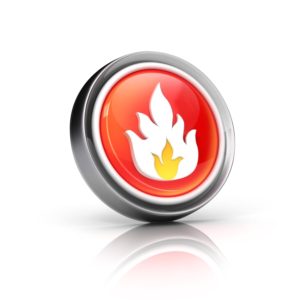
Temperature At Which Paper Burns – Fahrenheit 451, a novel by Ray Bradbury, describes the life of a fireman in a dystopian future, where reading books is illegal and firemen start fires instead of putting them out. The first lines of the book are: “It was a pleasure to burn.
It was a special pleasure to see things eaten, to see things blackened and changed.” The title of the book refers to the ignition point of paper, the temperature at which book paper would burn.
Despite the title of Bradbury’s brilliant novel, the flash point of paper has not been precisely determined and appears to be somewhat higher than 451 degrees Fahrenheit. Experiments to determine the temperature have used different measuring standards and different paper, skewing the results. Click here for the Best-Selling Fire Safety Products.
The Handbook of Physical Testing of Paper by Mark, Habeger, Borch, and Lyne quotes a temperature of 450 degrees Celsius, which would be 842 degrees F, but the quote is from a translated 1958 Japanese text and is probably mistranslated. The experiments usually range from 450 to 480 degrees.
Paper is one of the most ubiquitous and useful materials ever invented. There are as many types of paper as there are uses. From thick, heavy cardboard to the finest tissue paper, the major composites of the paper are the same: Cellulose, hemicellulose, and lignin.
- Cellulose is a complex, rigid polymer which is the major structural element in plant cell walls, providing stability.,
- Hemicellulose is a less complex plant material that tends to be amorphous. This compound interacts with the cellulose to strengthen plant cell walls and the resultant plants.
- Lignin is a compound that acts as a cement in the cellulose, also strengthening the structure.
While the main ingredients of all paper consist of the same plant materials, the percentages in the composition vary. For example, cardboard contains a high percentage of lignin while copying paper contains very little.
Then there are the additives. Pigments are added to color the stock. Filling materials, such as clay, calcium carbonate, talc and titania (titanium oxide), are added to brighten the paper, improving the quality of the printing. Other materials can make the paper water proof. Paper used for coffee filters requires chemicals to resist high temperature water. Each additive or change in the basic composition of the paper will change the temperature at which the paper burns.
Some of the uses for paper are very valuable to us and need to be safeguarded. Money, for instance, is made of paper. Documents, such as wills, deeds, manuscripts, all need to be protected. Books, those precious repositories of knowledge and imagination, that the firemen in Fahrenheit 451 burned, can be treasures, either in monetary or emotional value. Other prized objects may be stored away in cardboard boxes, lined with tissue paper.
Accidental fires in the home can be started by a multitude of causes; such as smoking, chimney fires, welding, candles, lightning, children with matches, defective electrical or heating equipment, or storage of flammables. A candle flame can reach up to 2500 degrees Fahrenheit, lightning to over 25,0000 degrees F. A match can get to over 1000 degrees F, and an incandescent light can reach nearly 600 degrees F. Occasionally fires are started by arson.
Paper flames off at about 480 degrees F. But the better question is at what temperature do books burn? Or cardboard boxes? If the house is burning, what will be the temperature inside a locked safe where important documents are stored? Are there special containers that will protect your valuables from fire? Some safes are fireproof, and there fireproof lock boxes.
Fire is an ever present danger in the home. Modern homes are safer than houses in the past century but not fireproof. Evaluate your treasures and important papers. Make sure that they are protected from fire as well as from theft. Click here for the Best-Selling Fire Safety Products.